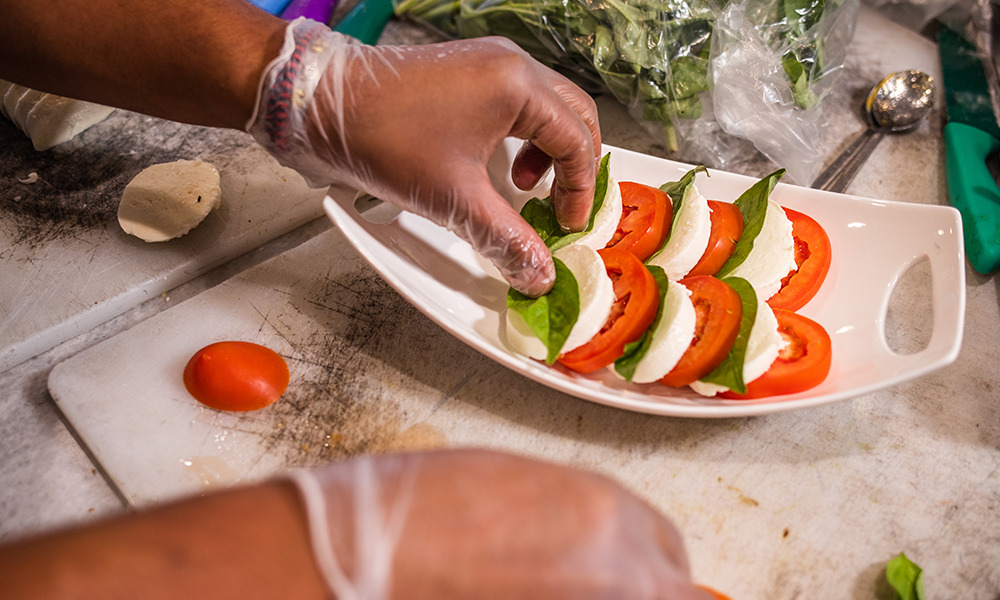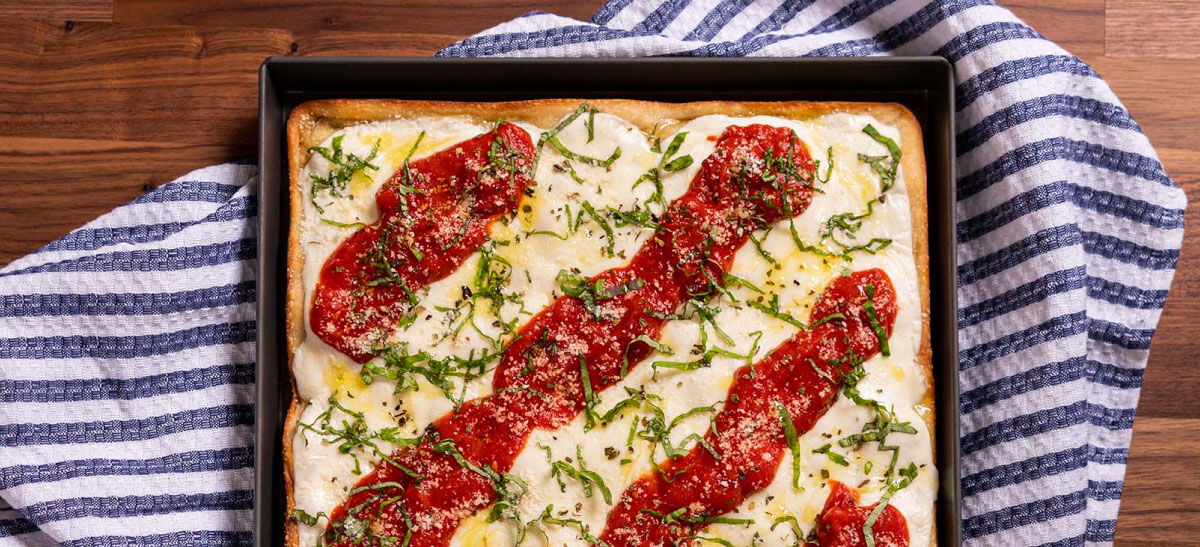
Culinary Trends
Customers Want Natural – What You Can Do About It
Consumers are more aware than ever of what is going into their food. They want fresh and natural ingredients, and are more than willing to pay a premium for them.
When it comes to nostalgia, memories of your grandmother’s home cooking are hard to beat. The smell of a homemade dish coming out of the oven in Grandma’s kitchen can take you back to simpler times and spark some of your fondest childhood memories. While everyone has their favorite dish specially made by theirs truly, in general most would agree that Italian nonnas are some of the best cooks of all time. Which brings us to the one and only Grandma Pizza.
Grandma Pizza is an East Coast specialty pie that is growing in popularity. While still relatively unknown outside of the New York area, excitement for this pizza style is growing and it may be the perfect menu addition to bring a new, authentic pie to your city. This square-panned pie results in a thinner, crispier crust than others (like Sicilian and Detroit styles) and is light on the toppings. Whether or not you experienced this style first-hand at nonna’s house, the taste brings a nostalgic feeling and resembles something your grandma would make.
Like many great foods, the origins of Grandma Pizza are somewhat unknown. According to Forbes, people (namely grandmothers) in Italy would make fast pizzas in their ovens from quickly stretched and pressed dough, fresh hand-crushed tomatoes and cheese to provide a snack or quick meal for their grandchildren. Sometime around the 1970s, this style of pizza started to become more commercialized based on demand as Italian Americans who immigrated to Long Island started getting nostalgic for the pizza they grew up eating in the Old Country.

While the details of which restaurant first used the name or popularized the style in the US is still up for debate, there are many references to Umberto’s Pizzeria & Restaurant on Long Island. Word is that the Grandma Pies were first made in the 70s just for the staff and were later sold on their menu, eventually called grandma-style, and quickly gained popularity in the region.
Even though this pizza style has been around for over 50 years, it has recently become more prevalent across the country, with the menuing of Grandma Pizza growing 41% since 2017.1 This increased popularity makes it important to understand the differences between Grandma Pizza and Sicilian, especially if you offer both on your menu. While both pizzas look similar and use an olive oil-coated pan, the similarities stop there. Most often, Grandma Pizza has a traditional square shape, unlike the rectangular shape of a Sicilian. Additionally, due to a shorter proofing time, the Grandma Pizza offers a slightly denser and crispier crust compared to the Sicilian’s fluffy, light middle. Here are the main characteristics that define an authentic Grandma Pizza:
Looking to make your Grandma Pizza stand out from the competition? Try Grande’s newest product innovation, Grande Avorio® Fresh Mozzarella Loaf. Avorio’s clean dairy flavor and delicate, tender texture is sure to create new fans of your pizzeria and put your Grandma Pizza on the map for repeat visits.
Whether you’re thinking of adding this new style to your menu or offering it as an LTO, don’t wait too long; in fact, 79% of consumers are craving something new.2 Click here to learn more about Grandma Pizza and request a product tasting of our new Avorio Fresh Mozzarella Loaf to fully test out the recipe.
1Datassential Menu Trends, 2020
2Datassential Simply Smarter Webinar, August 2020